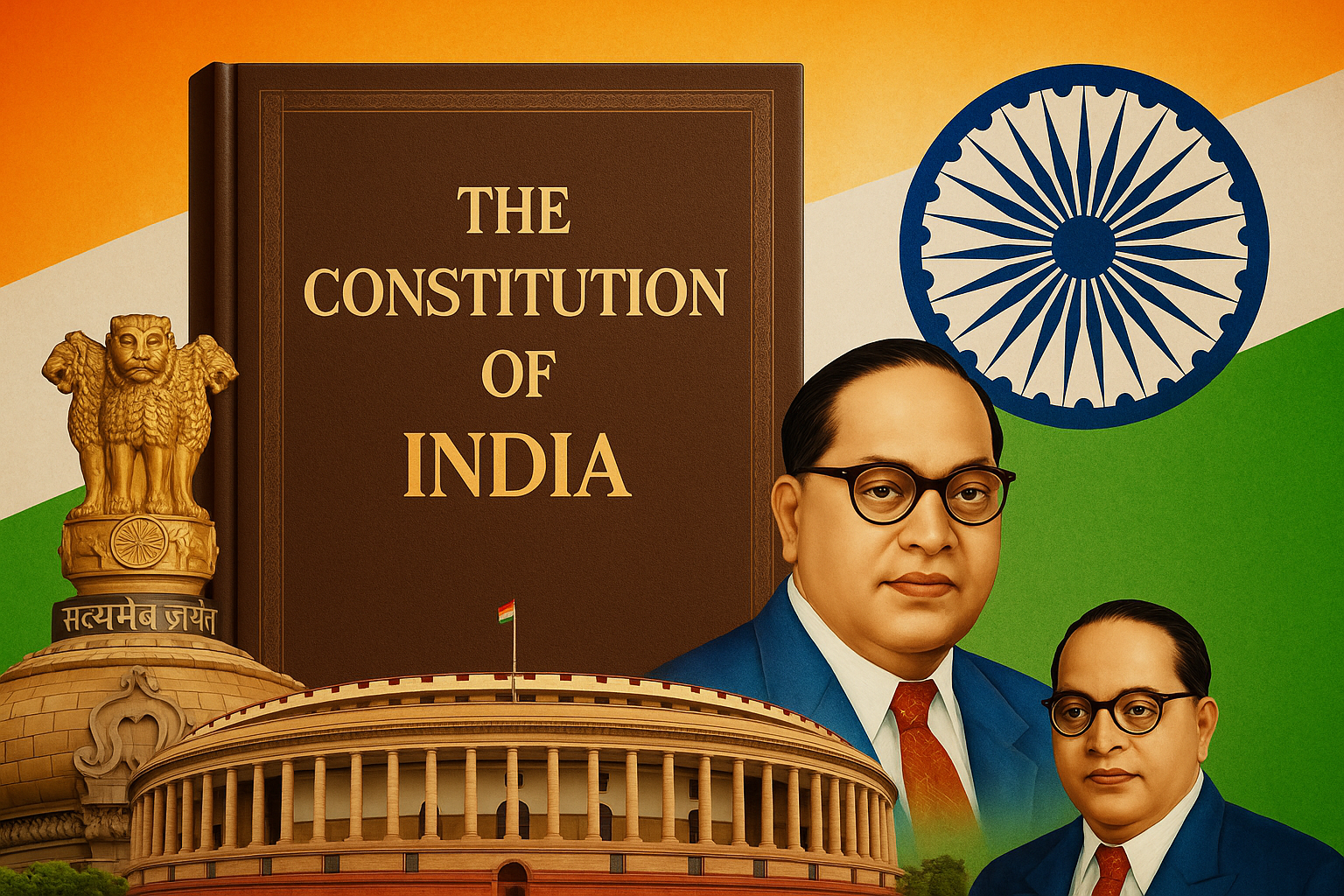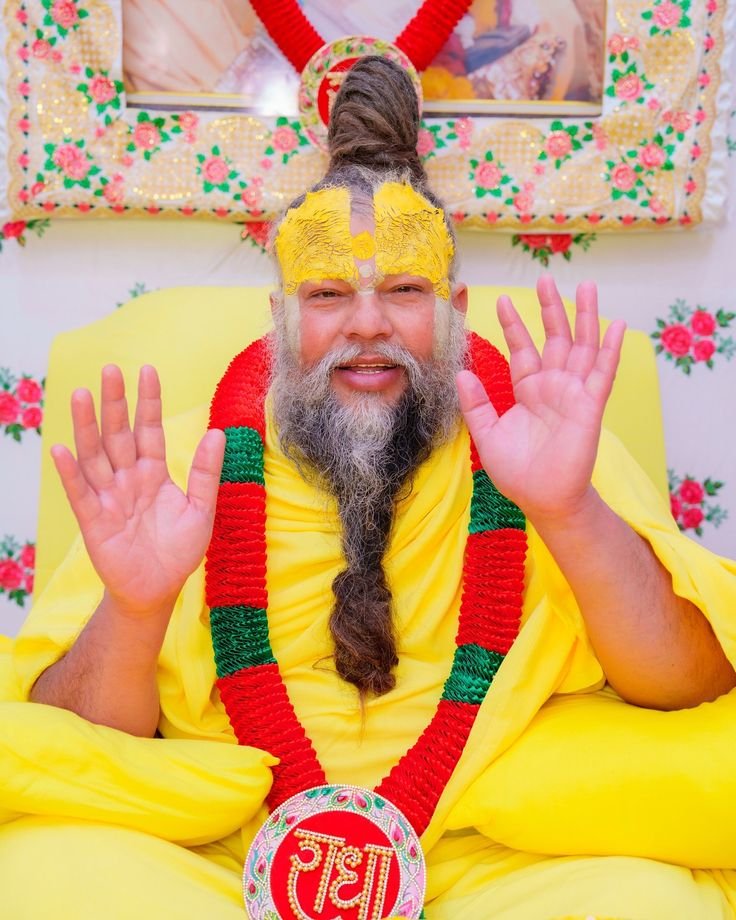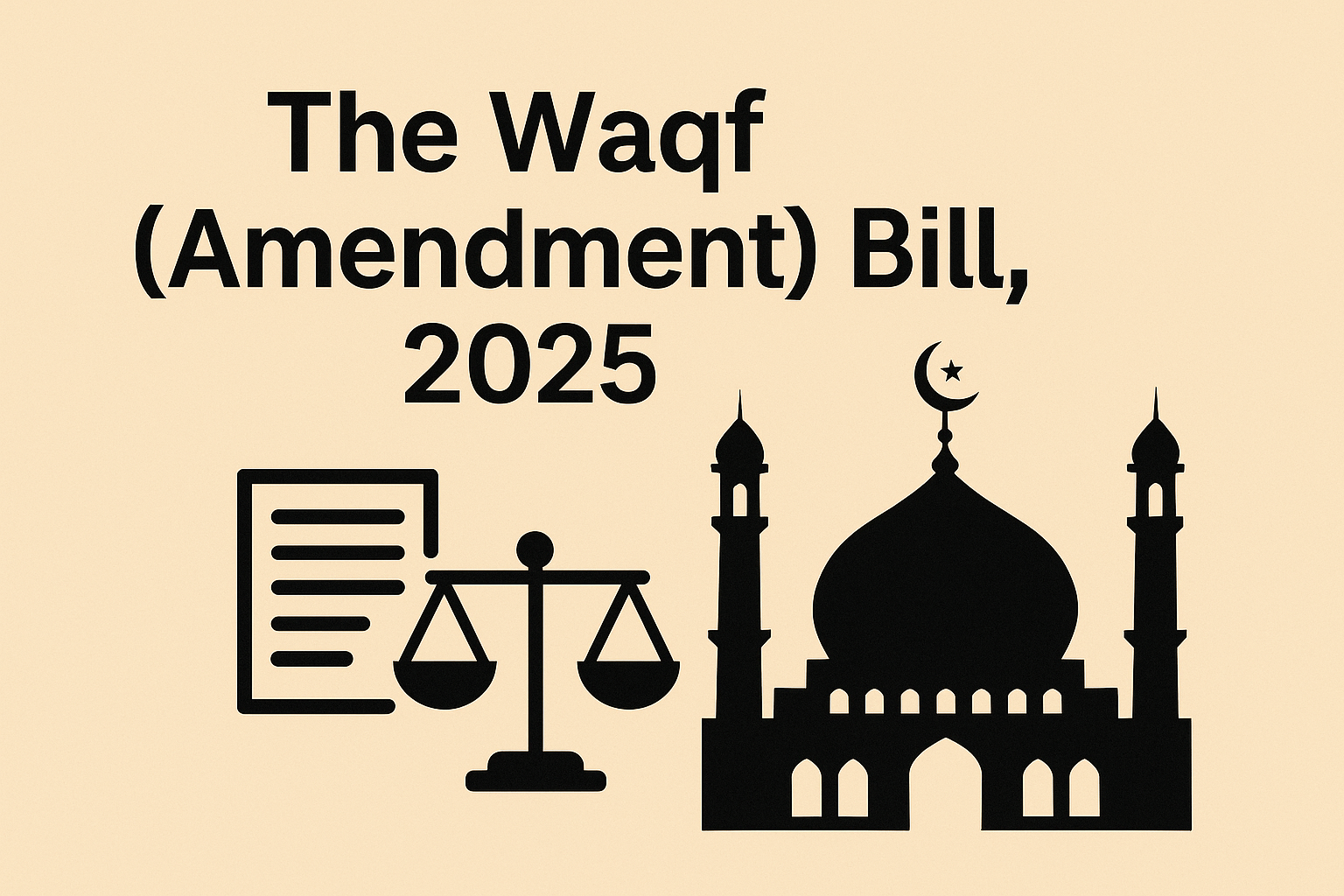The Constitution is the supreme law of any democratic country. It outlines the framework for government, guarantees fundamental rights to its citizens, and lays down the guiding principles for justice, liberty, and equality.
In India, the Constitution came into effect on January 26, 1950, marking the birth of the Republic of India. Drafted by the Constituent Assembly under the leadership of Dr. B.R. Ambedkar, it remains the longest written Constitution in the world.
Key Features of the Indian Constitution
-
Preamble – The soul of the Constitution. It declares India as a Sovereign, Socialist, Secular, and Democratic Republic.
-
Fundamental Rights – Protect the liberties and dignity of individuals. Includes rights to equality, freedom, and constitutional remedies.
-
Directive Principles of State Policy – Guidelines for the government to establish a just society.
-
Separation of Powers – Clearly defines roles for the Legislature, Executive, and Judiciary.
-
Federal Structure with Unitary Bias – India has a federal system but allows strong central control during national emergencies.
Why the Constitution Matters Today
The Constitution isn’t just a legal document; it’s the backbone of democracy. It ensures that every citizen, regardless of caste, gender, religion, or region, is treated equally under the law. It defines how power is distributed, how laws are made, and how justice is delivered.
In the age of social media, fake news, and rising polarization, the values enshrined in the Constitution—like secularism, liberty, and fraternity—serve as a moral compass.
Post-independence, the Constituent Assembly, headed by Dr. Rajendra Prasad, and with Dr. B.R. Ambedkar as the Chairman of the Drafting Committee
The Pillar of Democracy
The Constitution is more than a legal document; it is the lifeblood of a democratic nation. It is the written will of the people that serves as the supreme law of the land. A nation without a constitution is like a body without a soul or direction—it lacks the guiding framework necessary for governance, justice, and social harmony.
In countries like India, the Constitution plays an even more critical role. Given its diversity in language, religion, caste, and culture, the Constitution provides the much-needed unity and integrity to govern such a vast and varied population.
India’s Constitution is one of the most detailed and comprehensive documents in the world. Adopted on 26th January 1950, it marked the beginning of a new era, when the largest democracy in the world gave itself a modern, progressive, and inclusive charter of governance.
Historical Background
The demand for a written constitution in India began during the British colonial rule. However, it gained real momentum during the freedom movement, particularly after the Government of India Act 1935, which served as a partial blueprint for the current Constitution.
Post-independence, the Constituent Assembly, headed by Dr. Rajendra Prasad, and with Dr. B.R. Ambedkar as the Chairman of the Drafting Committee, was tasked with framing a constitution for the new nation. The Assembly included freedom fighters, legal experts, and visionaries from every corner of India.
After 2 years, 11 months, and 18 days of debate, the Constitution was adopted on November 26, 1949, and came into force on January 26, 1950, which is celebrated every year as Republic Day in India.
The Preamble: The Soul of the Constitution
The Preamble to the Constitution acts as its introduction and reflects the core values and vision of the document. It declares India to be:
Sovereign, Socialist, Secular, Democratic, and Republic
It promises all citizens:
-
Justice – social, economic, and political
-
Liberty – of thought, expression, belief, faith, and worship
-
Equality – of status and opportunity
-
Fraternity – assuring dignity of the individual and unity of the nation
Fundamental Rights: Protecting Citizens
One of the most revolutionary elements of the Constitution is the inclusion of Fundamental Rights. These are enforceable in a court of law and are designed to protect individual liberty and ensure equality.
They include:
-
Right to Equality (Article 14–18)
-
Right to Freedom (Article 19–22)
-
Right against Exploitation (Article 23–24)
-
Right to Freedom of Religion (Article 25–28)
-
Cultural and Educational Rights (Article 29–30)
-
Right to Constitutional Remedies (Article 32)
Dr. B.R. Ambedkar famously called Article 32 the “heart and soul” of the Constitution.
Directive Principles of State Policy
While not enforceable in a court of law, the Directive Principles serve as moral guidelines for governments. Inspired by the Irish Constitution, these principles promote the welfare of the people and guide the state to strive toward:
-
Minimizing inequality in income
-
Equal pay for equal work
-
Right to education and work
-
Organization of village panchayats
-
Promotion of international peace
These are particularly crucial in pushing forward the socio-economic agenda of the nation.
Fundamental Duties
Added later by the 42nd Amendment in 1976, the Fundamental Duties serve as reminders to citizens about their role in maintaining unity and integrity in the country. These include:
-
Respecting the Constitution and national flag
-
Promoting harmony
-
Safeguarding public property
-
Protecting the environment
-
Striving for excellence
Though not legally enforceable, they hold great civic importance.
Separation of Powers and Checks & Balances
The Constitution clearly delineates the roles of the:
-
Legislature (makes laws)
-
Executive (implements laws)
-
Judiciary (interprets laws)
This separation of powers ensures accountability, transparency, and prevents misuse of authority. The Supreme Court, High Courts, and Lower Courts play a vital role in upholding the rule of law.
Amendments: Adapting with Time
The Constitution of India is not rigid. It can be amended to meet the needs of changing times. As of today, there have been over 100 Amendments. Some of the most notable include:
-
1st Amendment (1951) – Restrictions on freedom of speech
-
42nd Amendment (1976) – Known as the “Mini-Constitution”
-
44th Amendment (1978) – Restored civil liberties post-Emergency
-
73rd & 74th Amendments (1992) – Strengthened Panchayati Raj and Municipalities
This flexibility ensures the Constitution remains relevant and effective.
Role in Modern India
Today, the Constitution remains a guiding light in times of political, social, or economic upheaval. Whether it’s a landmark Supreme Court judgment, debates on freedom of speech, or election reforms, it is the Constitution that steers the course.
In recent years, citizen awareness about constitutional rights and duties has significantly increased, thanks to education, activism, and media coverage.
Yet, challenges remain—judicial delays, corruption, mob violence, and social inequality still test the strength of the Constitution every day.








